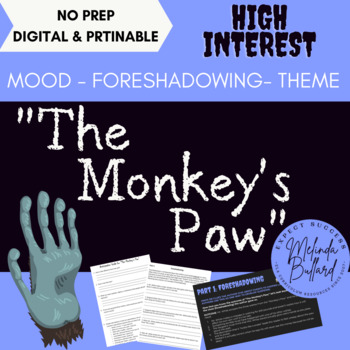"Monkey's Paw" Engaging Short Story Analysis (Mood, Theme, and Foreshadowing)
- Zip
What educators are saying
Description
This is not only a comprehensive lesson using the classic tale "The Monkey's Paw" by W.W. Jacobs, but it is also a whole lot of fun for middle school students! This story is great to teach around Halloween time!
What you get in the student guide:
1) Background information
2) Anticipation guide
3) Mini research opportunity on superstitions
4) Full copy of the unabridged text
5) Mood analysis sheet
6) Foreshadowing analysis sheet
7) Socratic question sheet
8) Theme: fate vs. free will analysis
9) Film / short story compare and contrast sheet
10) Comprehension questions in multiple choice format
You also get a companion Google Slides presentation to the student guide in the zip file.
1) Background, author information
2) Suggested video clips to compliment instruction
3) Discussion starter slides that correspond to the student guide
I just finished teaching this unit to my 6th graders. They loved it!
Happy teaching!


